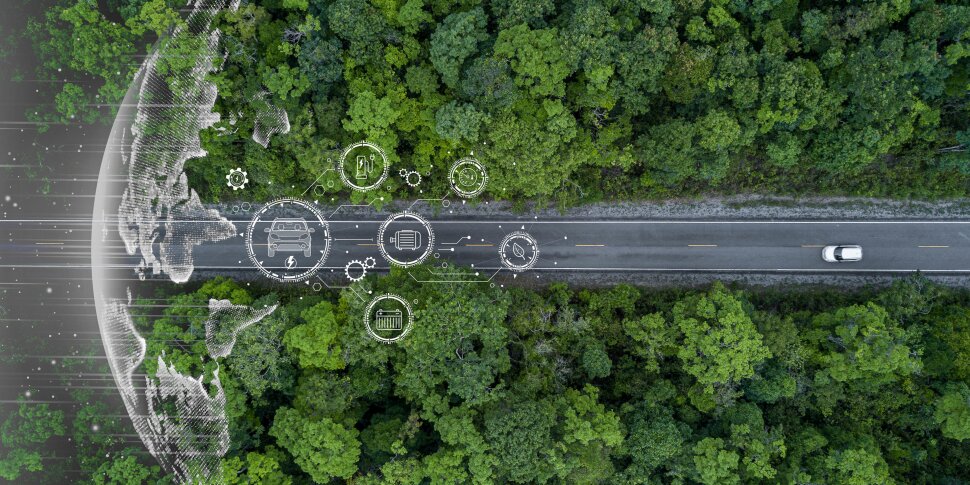Mapping Mangrove Species Distribution and Density Using Sentinel-2 Satellite Imagery and Spectral Analysis
Downloads
Doi:10.28991/HEF-2025-06-01-01
Full Text:PDF
Downloads
Jusoff, K. (2008). Geospatial Information Technology for Conservation of Coastal Forest and Mangroves Environment in Malaysia. Computer and Information Science, 1(2), 129. doi:10.5539/cis.v1n2p129.
van Bochove, J. W., Sullivan, E., Nakamura, T., & Drakou, E. G. (2014). The importance of mangroves to people: a call to action. United Nations Environment Programme World Conservation Monitoring Centre (UNEP-WCMC), Cambridge, United Kingdom.
Alappatt, J. P. (2018). Structure and species diversity of mangrove ecosystem. Biodiversity and Climate Change Adaptation in Tropical Islands, 127–144. doi:10.1016/B978-0-12-813064-3.00005-3.
Warfield, A. D., & Leon, J. X. (2019). Estimating mangrove forest volume using terrestrial laser scanning and UAV-derived structure-from-motion. Drones, 3(2), 1–17. doi:10.3390/drones3020032.
Friess, D. A., Rogers, K., Lovelock, C. E., Krauss, K. W., Hamilton, S. E., Lee, S. Y., Lucas, R., Primavera, J., Rajkaran, A., & Shi, S. (2019). The State of the World's Mangrove Forests: Past, Present, and Future. Annual Review of Environment and Resources, 44(1), 89–115. doi:10.1146/annurev-environ-101718-033302.
Islam, K., Sarker, S., Morsad, G., Khan, M. F., Chowdhury, A., & Islam, S. L. U. (2024). Spatial–temporal changes of shoreline and Vegetation: Impacts on mangrove cover along the Sundarbans area, Bangladesh. Journal of Coastal Conservation, 28(1). doi:10.1007/s11852-023-01016-z.
Dong, H., Gao, Y., Chen, R., & Wei, L. (2024). MangroveSeg: Deep-Supervision-Guided Feature Aggregation Network for Mangrove Detection and Segmentation in Satellite Images. Forests, 15(1), 127. doi:10.3390/f15010127.
Ginting, D. N. B., Setiawan, K. T., Anggraini, N., Suardana, A. P., Nandika, M. R., Ulfa, A., Aziz, K., & Dewanti, R. (2024). Comparison between top and bottom of atmosphere Sentinel-2 image for mangrove mapping in Balikpapan Bay, East Kalimantan. BIO Web of Conferences, 89. doi:10.1051/bioconf/20248907003.
Alongi, D. M. (2014). Carbon cycling and storage in mangrove forests. Annual Review of Marine Science, 6, 195–219. doi:10.1146/annurev-marine-010213-135020.
Rovai, A. S., Twilley, R. R., Worthington, T. A., & Riul, P. (2022). Brazilian Mangroves: Blue Carbon Hotspots of National and Global Relevance to Natural Climate Solutions. Frontiers in Forests and Global Change, 4. doi:10.3389/ffgc.2021.787533.
Richards, D. R., Thompson, B. S., & Wijedasa, L. (2020). Quantifying net loss of global mangrove carbon stocks from 20 years of land cover change. Nature Communications, 11(1), 4260. doi:10.1038/s41467-020-18118-z.
Chatting, M., Al-Maslamani, I., Walton, M., Skov, M. W., Kennedy, H., Husrevoglu, Y. S., & Le Vay, L. (2022). Future Mangrove Carbon Storage under Climate Change and Deforestation. Frontiers in Marine Science, 9. doi:10.3389/fmars.2022.781876.
Chatting, M., LeVay, L., Walton, M., Skov, M. W., Kennedy, H., Wilson, S., & Al-Maslamani, I. (2020). Mangrove carbon stocks and biomass partitioning in an extreme environment. Estuarine, Coastal and Shelf Science, 244. doi:10.1016/j.ecss.2020.106940.
Tengku Hashim, T. M. Z., & Suratman, M. N. (2021). Mangroves as a Carbon Sink/Stocks. In Mangroves: Ecology, Biodiversity and Management. Springer Singapore. doi:10.1007/978-981-16-2494-0_7.
Alongi, D. M. (2008). Mangrove forests: Resilience, protection from tsunamis, and responses to global climate change. Estuarine, Coastal and Shelf Science, 76(1), 1–13. doi:10.1016/j.ecss.2007.08.024.
Alongi, D. M. (2015). The Impact of Climate Change on Mangrove Forests. Current Climate Change Reports, 1(1), 30–39. doi:10.1007/s40641-015-0002-x.
Giri, C. (2016). Observation and monitoring of mangrove forests using remote sensing: Opportunities and challenges. Remote Sensing, 8(9), 783. doi:10.3390/rs8090783.
Gandhi, S., & Jones, T. G. (2019). Identifying mangrove deforestation hotspots in South Asia, Southeast Asia and Asia-Pacific. Remote Sensing, 11(6), 728. doi:10.3390/RS11060728.
Carter, H. N., Schmidt, S. W., & Hirons, A. C. (2015). An international assessment of mangrove management: Incorporation in integrated coastal zone management. Diversity, 7(2), 74–104. doi:10.3390/d7020074.
Dahdouh-Guebas, F. (2002). The use of remote sensing and GIS in the sustainable management of tropical coastal ecosystems. Environment, Development and Sustainability, 4(2), 93–112. doi:10.1023/A:1020887204285.
Maurya, K., Mahajan, S., & Chaube, N. (2021). Remote sensing techniques: mapping and monitoring of mangrove ecosystem”a review. Complex and Intelligent Systems, 7(6), 2797–2818. doi:10.1007/s40747-021-00457-z.
Pham, T. D., Yokoya, N., Bui, D. T., Yoshino, K., & Friess, D. A. (2019). Remote sensing approaches for monitoring mangrove species, structure, and biomass: Opportunities and challenges. Remote Sensing, 11(3), 230. doi:10.3390/rs11030230.
Yudha, G. D., & Purnama, S. M. (2018). Analysis of dissemination methods for remote sensing information in maritime field to support the local government. IOP Conference Series: Earth and Environmental Science, 162(1), 12046. doi:10.1088/1755-1315/162/1/012046.
Wang, L., Jia, M., Yin, D., & Tian, J. (2019). A review of remote sensing for mangrove forests: 1956–2018. Remote Sensing of Environment, 231. doi:10.1016/j.rse.2019.111223.
Melesse, A. M., & Jordan, J. D. (2002). A comparison of fuzzy vs. augmented-ISODATA classification algorithms for cloud-shadow discrimination from Landsat images. Photogrammetric Engineering and Remote Sensing, 68(9), 905–911.
Kantakumar, L. N., & Neelamsetti, P. (2015). Multi-temporal land use classification using hybrid approach. Egyptian Journal of Remote Sensing and Space Science, 18(2), 289–295. doi:10.1016/j.ejrs.2015.09.003.
Keshava, N., & Mustard, J. F. (2002). Spectral unmixing. IEEE Signal Processing Magazine, 19(1), 44–57. doi:10.1109/79.974727.
Kärdi, T. (2007). Remote sensing of urban areas: Linear spectral unmixing of Landsat Thematic Mapper images acquired over Tartu (Estonia). Proceedings of the Estonian Academy of Sciences: Biology, Ecology, 56(1), 19–32. doi:10.3176/eco.2007.1.02.
Cipta, I. M., Jaelani, L. M., & Sanjaya, H. (2022). Identification of Paddy Varieties from Landsat 8 Satellite Image Data Using Spectral Unmixing Method in Indramayu Regency, Indonesia. ISPRS International Journal of Geo-Information, 11(10). doi:10.3390/ijgi11100510.
Cipta, I. M., Jaelani, L. M., & Sanjaya, H. (2024). A phenology-based linear spectral unmixing method for rice varieties identification from Landsat 8 Satellite Image in Ngawi District, East Java, Indonesia. Biodiversitas, 25(4), 1691–1702. doi:10.13057/biodiv/d250439.
Kusoiry, M. R., Jaelani, L. M., & Sanjaya, H. (2024). Using satellite image data to identify rice varieties through linear spectral unmixing method (case study: Karangjati Sub District, Ngawi Regency). Advances in Modern Agriculture, 5(2), 2538. doi:10.54517/ama.v5i2.2538.
Xu, X., Tong, X., Plaza, A., Zhong, Y., Xie, H., & Zhang, L. (2017). Using Linear Spectral Unmixing for Subpixel Mapping of Hyperspectral Imagery: A Quantitative Assessment. IEEE Journal of Selected Topics in Applied Earth Observations and Remote Sensing, 10(4), 1589–1600. doi:10.1109/JSTARS.2016.2624560.
Yu, J., Chen, D., Lin, Y., & Ye, S. (2017). Comparison of linear and nonlinear spectral unmixing approaches: a case study with multispectral TM imagery. International Journal of Remote Sensing, 38(3), 773–795. doi:10.1080/01431161.2016.1271475.
Green, E. P., Clark, C. D., Mumby, P. J., Edwards, A. J., & Ellis, A. C. (1998). Remote sensing techniques for mangrove mapping. International Journal of Remote Sensing, 19(5), 935–956. doi:10.1080/014311698215801.
Jensen, J. R., Lin, H., Yang, X., Ramsey, E., Davis, B. A., & Davis, C. W. (1991). The measurement of mangrove characteristics in southwest florida using spot multispectral data. Geocarto International, 6(2), 13–21. doi:10.1080/10106049109354302.
Inoue, T., Kohzu, A., Akaji, Y., Miura, S., & Baba, S. (2024). Diazotrophic nitrogen fixation through aerial roots occurs in Avicennia marina: implications for adaptation of mangrove plant growth to low-nitrogen tidal flats. New Phytologist, 241(4), 1464–1475. doi:10.1111/nph.19442.
Ramesh, C., Muthukumar, C., Koushik, S., Shunmugaraj, T., & Mallavarapu Venkata Ramana, M. (2024). Hypersalinity and Low Nitrogen Levels Cause Dwarf Growth in Mangrove Avicennia marina (Forssk.) Vierh. Proceedings of the National Academy of Sciences India Section B - Biological Sciences, 94(2), 331–336. doi:10.1007/s40011-023-01532-w.
Friis, G., Smith, E. G., Lovelock, C. E., Ortega, A., Marshell, A., Duarte, C. M., & Burt, J. A. (2024). Rapid diversification of grey mangroves (Avicennia marina) driven by geographic isolation and extreme environmental conditions in the Arabian Peninsula. Molecular Ecology, 33(4), e17260. doi:10.1111/mec.17260.
Sitepu, B. S., Chasani, A. R., Mukhlisi, M., Atmoko, T., Adman, B., & Prihatini, I. (2024). Camptostemon philippinensis, a new record of endangered mangrove species in the Balikpapan Bay, East Kalimantan, Indonesia. F1000Research, 12, 1394. doi:10.12688/f1000research.140887.2.
Kinya, G., Kairo, J. G., Nyoike, R. N., Nguu, J. G., Githinji, B. K., & Githaiga, M. N. (2024). Eco-Engineering Mangrove Restoration at Gazi Bay, Kenya. Diversity, 16(3), 135. doi:10.3390/d16030135.
Nimsi, K. A., Arya, H., Manjusha, K., & Kathiresan, K. (2024). Multifarious plant growth-promoting traits of mangrove yeasts: growth enhancement in mangrove seedlings (Rhizophora mucronata) for conservation. Archives of Microbiology, 206(4), 192. doi:10.1007/s00203-024-03913-9.
- The authors retain all copyrights. It is noticeable that authors will not be forced to sign any copyright transfer agreements.
- This work (including HTML and PDF Files) is licensed under a Creative Commons Attribution 4.0 International License.














